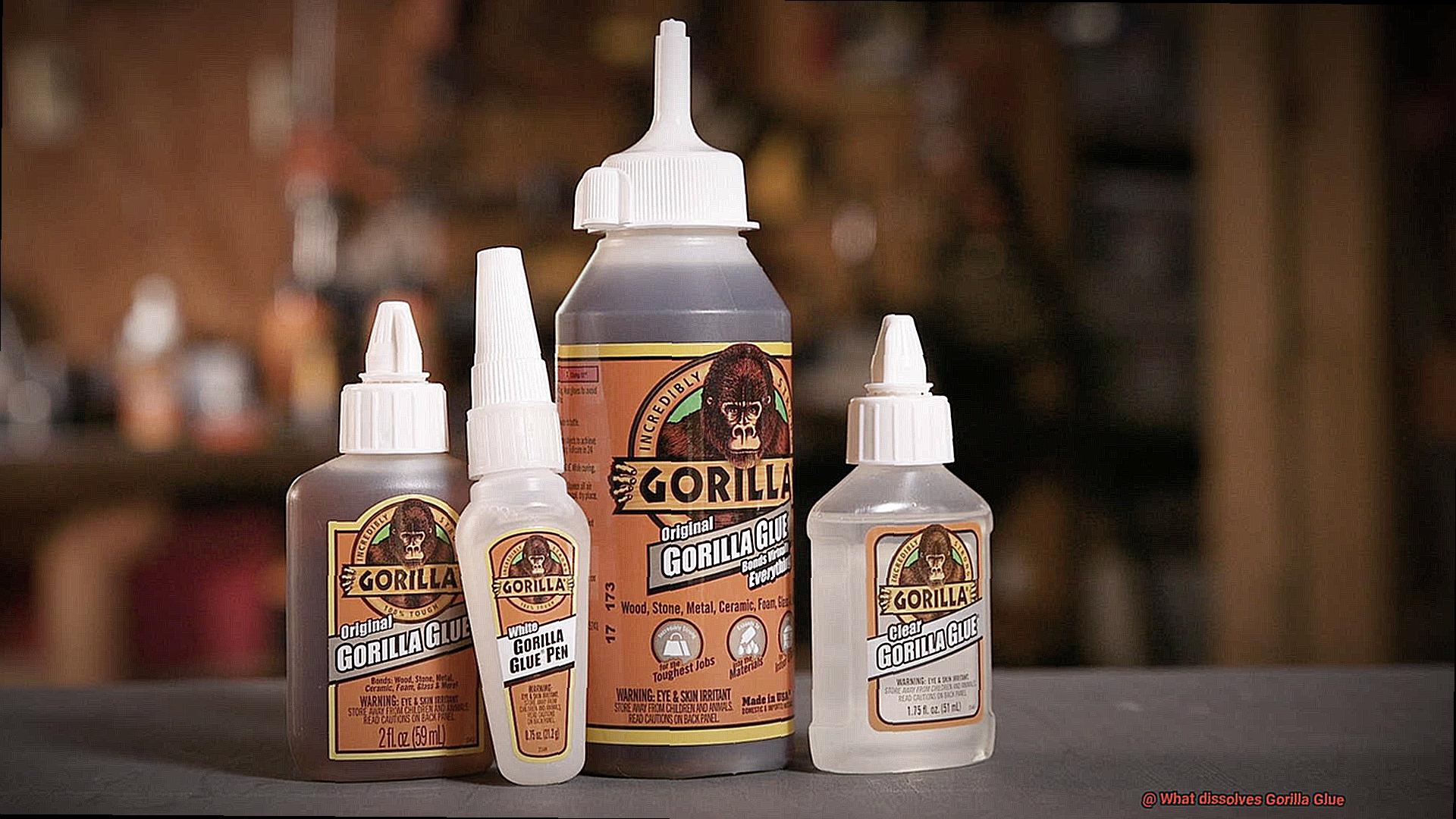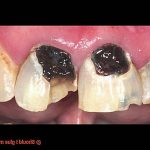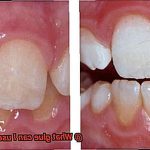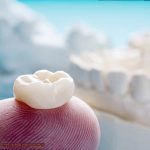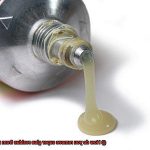Have you ever found yourself with sticky hands after using Gorilla Glue for a DIY project? Or maybe you accidentally spilled it on a surface that wasn’t meant to be glued? If you’re nodding your head in agreement, then you know firsthand that removing Gorilla Glue can be quite the challenge. But don’t worry – we’ve got your back. In this blog post, we’ll dive into the nitty-gritty and answer the burning question on everyone’s mind – What dissolves Gorilla Glue?
Gorilla Glue is notorious for its incredible bonding power – it can effortlessly glue almost any material, from wood and metal to ceramic and plastic. However, removing it can be quite tricky since it’s water-resistant and can withstand high temperatures. But fear not. There are several methods to dissolve Gorilla Glue.
In this post, we’ll cover a range of Gorilla Glue dissolvers, including acetone, rubbing alcohol, vinegar, and warm soapy water. We’ll also discuss safety precautions and recommend the best tools to use when dealing with this tough adhesive. By the end of this article, you’ll have all the knowledge you need to tackle any Gorilla Glue mishaps like a pro. So let’s jump right in.
What is Gorilla Glue?
Contents
Look no further than Gorilla Glue. This polyurethane-based adhesive was developed by a team of scientists striving to create the strongest product on the market. And, boy, did they succeed. Since its debut in 1999, Gorilla Glue has become a go-to choice for DIY enthusiasts, woodworkers, and construction workers alike.
Gorilla Glue owes its strength to its unique formula, which forms a chemical bond with any surface it’s applied to. Plus, its expanding feature allows it to fill in any gaps or voids, making it perfect for projects that require a strong and permanent bond. Whether you’re working with wood, metal, ceramics, or plastic, Gorilla Glue comes in various sizes and forms like bottles, tubes, and pens to suit your needs.
But here’s the catch: Gorilla Glue requires moisture to activate. So, before applying the glue, make sure to dampen both surfaces you’re bonding. Otherwise, it won’t work correctly. And once it dries, it’s not going anywhere anytime soon. So be careful where you apply it.
But don’t worry if you need to remove Gorilla Glue from a surface. Although it’s waterproof and challenging to dissolve with water alone, there are options. Stronger solvents like acetone or rubbing alcohol can break down the glue quickly but take care when using them as they might damage certain surfaces. Natural acids like vinegar or lemon juice are less harsh but may take longer to dissolve the glue.
Why Is It Difficult to Dissolve Gorilla Glue?
Gorilla Glue is a game-changer in the world of adhesives, renowned for its strength and durability. However, once it sets, it can be a real challenge to dissolve or remove. So why is Gorilla Glue so difficult to dissolve? Let’s dive in.
Firstly, Gorilla Glue is a polyurethane-based adhesive that forms a robust and resilient bond by reacting two or more compounds together. This reaction creates a bond that resists most solvents and chemicals. Hence, common solvents like water, alcohol, or vinegar are ineffective at dissolving Gorilla Glue.
Secondly, Gorilla Glue expands as it dries, creating a tight and unyielding bond between two surfaces. This makes it incredibly difficult to break apart without damaging the surfaces it holds together. If you accidentally apply Gorilla Glue in the wrong place, removing it can be a daunting task.
Thirdly, Gorilla Glue is waterproof and moisture-resistant, enabling it to withstand exposure to water and other liquids without losing its hold. As a result, water-based solvents are usually ineffective at dissolving Gorilla Glue.
Lastly, Gorilla Glue hardens over time, becoming increasingly challenging to dissolve as it dries and cures. If you don’t remove the glue immediately after application, it may become nearly impossible to remove later on.
Acetone: A Powerful Solvent for Dissolving Gorilla Glue
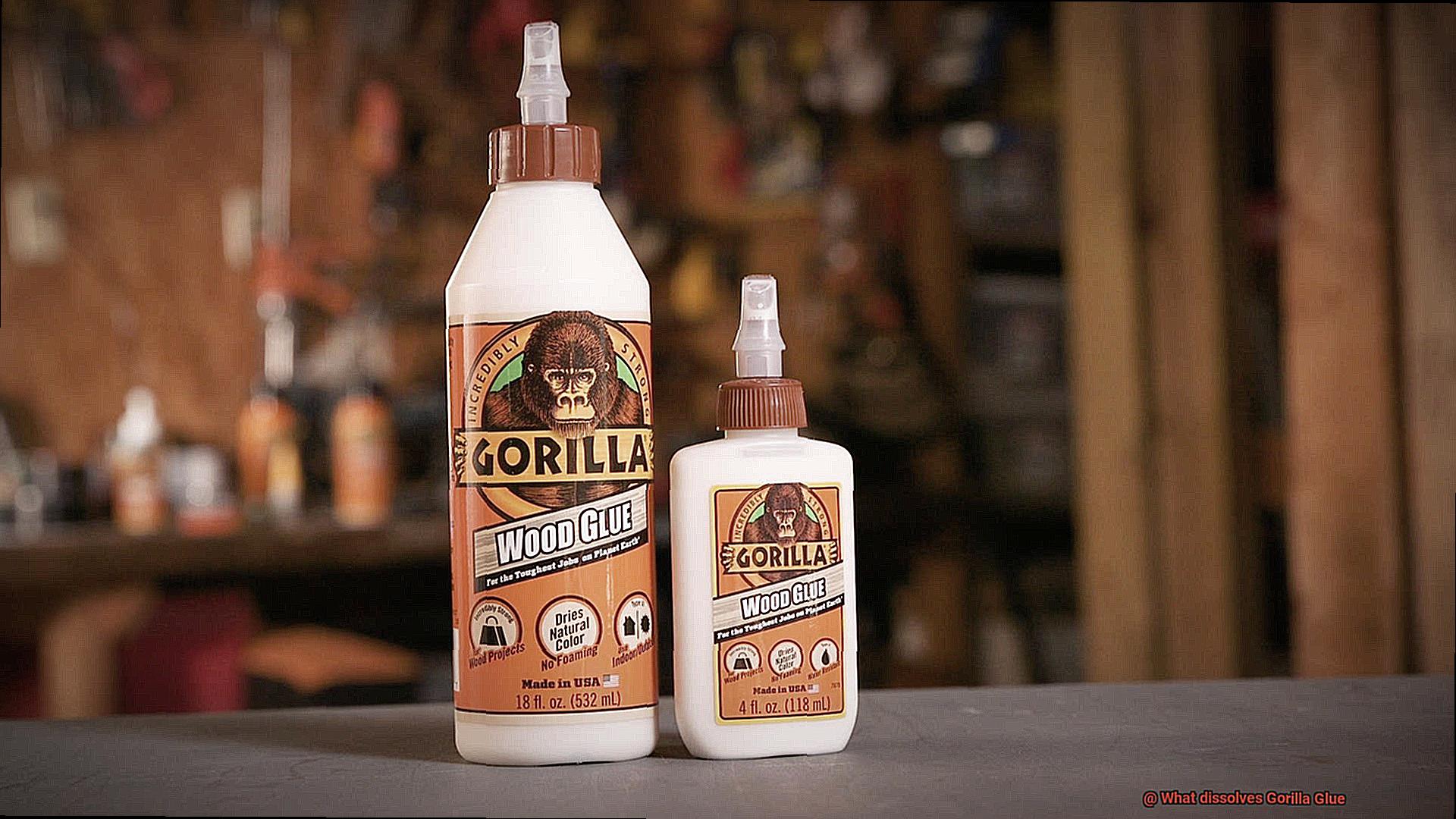
If you’re dealing with tough-to-remove Gorilla Glue, don’t worry. Expert research shows that acetone is a powerful solvent that can dissolve even its strongest bonds.
Acetone is a colorless, volatile liquid with a distinctive sweet scent. It’s commonly found in nail polish remover and paint thinner, but it also has many industrial applications. However, it’s crucial to be careful when using acetone, as it can be harmful if ingested or inhaled. Always use it in a well-ventilated area and avoid direct contact with your skin or eyes.
So how do you use acetone to dissolve Gorilla Glue? It’s easy. Simply apply a small amount of acetone to the glue with a cotton swab or cloth. Let the acetone sit for several minutes, allowing it to penetrate the glue. Once it has softened, gently scrape away the glue using a plastic scraper or putty knife.
It’s important to note that acetone might not work on all types of Gorilla Glue, especially if the glue has fully cured or has been exposed to high temperatures. In such cases, you may need to use other solvents or mechanical methods to remove the glue.
Rubbing Alcohol or Isopropyl Alcohol: An Alternative to Acetone
Look no further than rubbing alcohol or isopropyl alcohol. These alternatives dissolve the glue without being as rough on your skin.
Isopropyl alcohol has a slower evaporation rate than acetone, giving it more time to work its magic. Simply apply rubbing alcohol to the glue and wait a few minutes before gently scraping it away with a plastic scraper or your fingernail.
The best part? Rubbing alcohol is generally safer and less harsh on skin than acetone. However, it may not be as effective on larger amounts of glue or on surfaces sensitive to alcohol. Always do a small test before applying any solvent to a larger surface.
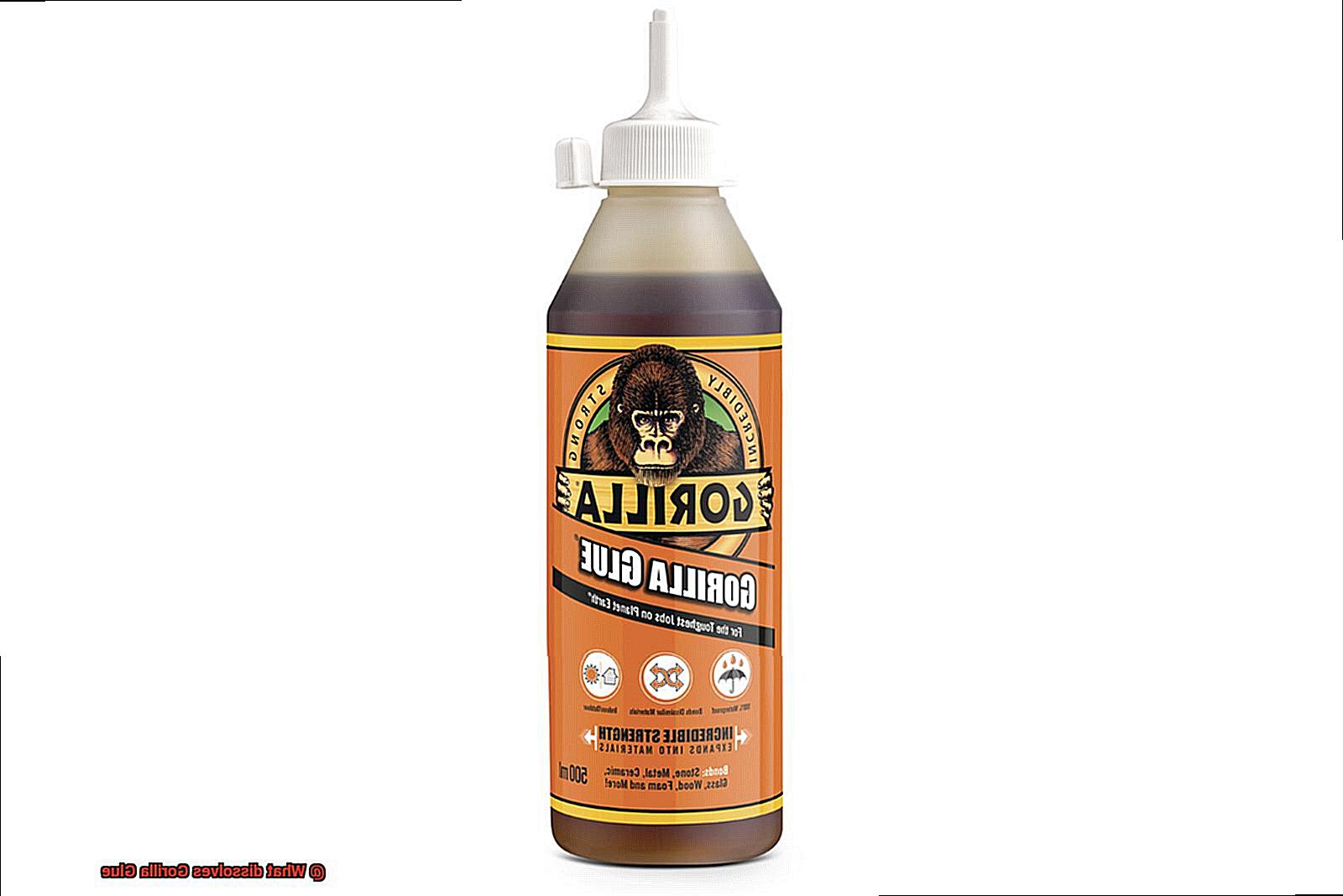
Remember, while rubbing alcohol can dissolve Gorilla Glue, it may not be the best solution for every surface or application. Check the manufacturer’s instructions or consult with a professional before attempting to remove Gorilla Glue from any surface.
Natural Alternatives: Vinegar and Lemon Juice
Fear not, there are natural alternatives that can help. Vinegar and lemon juice are two options that can effectively dissolve the tough adhesive, without resorting to harsh chemicals.
Vinegar’s acidic properties make it a great option for breaking down the glue’s chemical bonds. To use vinegar, simply soak a cloth in it and apply it to the affected area. Let it sit for a few minutes before attempting to remove the glue. Lemon juice, on the other hand, contains citric acid which can also dissolve Gorilla Glue. Simply squeeze lemon juice onto a cloth and apply it to the affected area, then let it sit for a few minutes before wiping away the glue.
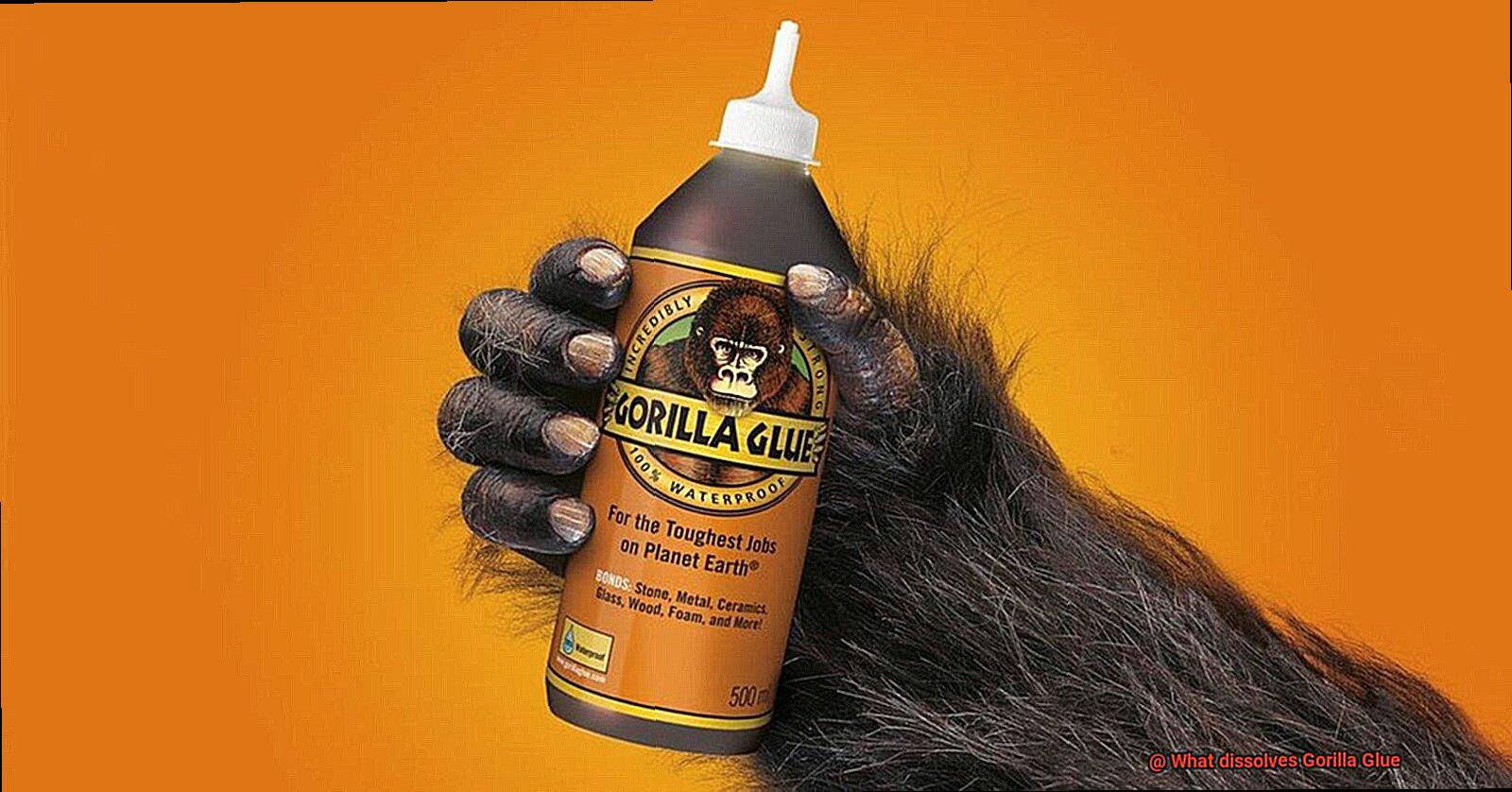
While natural alternatives like vinegar and lemon juice can be effective for dissolving Gorilla Glue, it’s important to note that they may not work as well as chemical solvents specifically designed for this purpose. They may also be less effective on larger or more stubborn glue stains. If you’re unsure about using a particular product or method, consult with a professional or manufacturer before attempting to remove the glue.
When working with any type of solvent or cleaner, safety should always be your top priority. Always wear gloves and work in a well-ventilated area to avoid inhaling any fumes. Take extra precautions when handling adhesives or solvents on sensitive skin areas.
Tips for Safely Removing Gorilla Glue
If you’ve ever worked with Gorilla Glue, you know how difficult it can be to remove it without damaging your surfaces. But fear not. Here are five tips on how to safely and effectively remove Gorilla Glue:
Acetone
Acetone is a common solvent that can dissolve Gorilla Glue. However, it’s important to use pure acetone and not nail polish remover, which often contains other ingredients that may damage your surfaces. Apply the acetone to the glue and let it sit for a few minutes before gently wiping it away with a cloth.
Isopropyl alcohol
Isopropyl alcohol is another effective solvent for removing Gorilla Glue. This method is particularly useful for removing glue from your skin or hair. Soak the affected area in isopropyl alcohol for several minutes before gently rubbing the glue away.
Hot, soapy water
If you’re trying to remove Gorilla Glue from a surface like plastic or metal, hot, soapy water may be effective. Soak the affected area in hot water mixed with dish soap for several minutes before gently scrubbing the glue away with a sponge or soft-bristled brush.
Plastic scraper
If you’re trying to remove Gorilla Glue from a hard surface like wood or metal, you may be able to scrape it away with a plastic scraper. Be careful not to scratch the surface and use gentle pressure.
Avoid sharp tools
Never use sharp tools like knives or razor blades to remove Gorilla Glue as this can damage your surfaces or cause injury.
By following these tips, you can safely and effectively remove Gorilla Glue without causing any damage or harm. Remember to always work carefully and slowly when removing Gorilla Glue, especially on delicate surfaces. And if you’re unsure of what method to use, seek professional help.
Li3_SpYup18″ >
Conclusion
To wrap things up, getting rid of Gorilla Glue can be a daunting task, but fret not. Armed with the right knowledge and tools, you can do it safely and efficiently. As you may know, Gorilla Glue is notoriously tough to dissolve using conventional solvents like water or alcohol. However, there are several ways to break down this adhesive powerhouse.
One of the most potent solvents that can dissolve Gorilla Glue is acetone. But beware. This chemical can cause skin and eye irritation if not handled with care. A safer alternative would be rubbing alcohol or isopropyl alcohol. These substances effectively dissolve the glue without being too harsh on your skin.
If you prefer natural alternatives, vinegar or lemon juice could also do the trick. They are gentle yet effective in dissolving Gorilla Glue from surfaces.
When removing Gorilla Glue from surfaces, always prioritize safety and use appropriate tools. Avoid sharp tools like knives or razor blades as they may damage surfaces or injure you. Instead, opt for plastic scrapers or soft-bristled brushes.
In summary, whether you’re a DIY enthusiast or a construction worker dealing with Gorilla Glue mishaps, knowing how to remove it safely can save you time and money in the long run.

